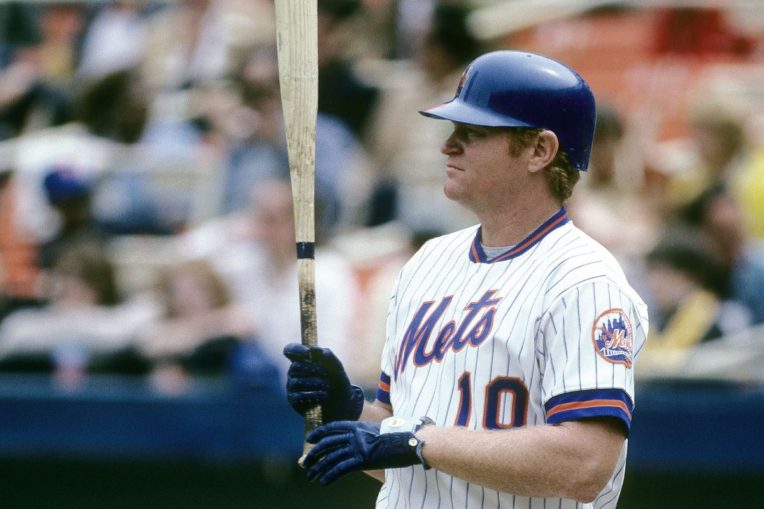We’re looking back at the 50th anniversary of the Mets’ 1973 National League pennant-winning team by reviewing the most inspirational figures of that remarkable run. We continue with a player who over a 23-year career compiled over 2,700 hits and many more fans—revered in Montreal and adored in New York.
The passion exuded by redhead Daniel Joseph Staub was not outward. He was a gentle soul with a quiet intensity underneath. He ensured each season, each game, and each at-bat had his utmost attention.
Staub didn’t become the first player to tally at least 500 hits with four clubs by accident. He totaled 11,229 plate appearances over the course of a career that encompassed 2,951 games. The 1973 season was not Staub’s best, but it was the closest he ever got to a World Series title. Despite a key injury during that postseason, he nearly willed his team to the ring.
Staub came to New York from Montreal, where he was embraced, unlike any player in that franchise’s history. “Le Grand Orange” represented the Expos’ early years. However, the locals were forced to deal with the news of a trade to Queens in April 1972. Gil Hodges, shortly before his death, insisted on getting Staub to strengthen a weak Mets offense. The Expos agreed to part with Rusty in exchange for three youngsters.
Just as the trade was devastating to Montreal’s fan base, New York reveled in getting someone of Staub’s caliber—someone who could add spice to a lineup that was getting rather bland.

Staub, who had played well for perennial second-division clubs, fed off the talent around him and the Mets benefited from Rusty’s arrival. New York jumped out by winning 25 of its first 32. Staub’s insertion in the cleanup spot expanded the possibilities of the offense and lessened pressure on Tommie Agee and Cleon Jones. Combined with their usual supply of great pitching, the Mets were six games up on Pittsburgh by May 21.
The good times, though, would end abruptly. Staub, hitting .315 with eight homers and 31 RBIs, was plunked on the right hand by a pitch from soon-to-be teammate George Stone of Atlanta on June 3. Although he tried to fight through the pain, the soreness was too much. X-rays disclosed a fractured hamate bone. It was part of an epidemic that engulfed the Mets, as Agee, Jones, and others were also set back by injuries. When Rusty went on the disabled list, the
Mets were perched in first place. When he came back on September 18, the Mets were 16.5 games out. The start of the 1973 season charted an all-too-familiar and unwelcome pattern. Staub couldn’t shake the injury that derailed his ’72 campaign, while other vital members of the Mets succumbed to similar fates.
He missed only 10 games but couldn’t get the Mets out of last place. With a little more than a month left in the regular season, they were still in the NL East cellar. A grand slam on August 27 against San Diego helped to forge New York’s resurgence.
Staub stayed at the forefront by batting .321 with five homers, 21 RBIs, and 24 runs scored over the final 33 games. He ended on a 15-game hitting streak, going 4-for-5 with two runs scored and an RBI in a 6–4 NL East clincher in Chicago.
His scorching bat kept blazing in the third game of the NLCS. Two home runs in two at-bats gave him three for the series and jump-started the Mets to a 9–2 victory that put them on the precipice of an unlikely pennant. Staub’s offense decidedly won Game 3 and his defense almost won Game 4.
Rusty made an over-the-shoulder grab in the top of the sixth to preserve the Mets’ slim 1–0 lead. In the 11th, Dan Driessen had what appeared to be a tie-breaking extra-base hit, but Staub raced back to the warning track and hauled it in.
This valiant effort, though, came with a price. As Staub secured the catch, he careened into the right-center-field wall. Though he pressed on through the Reds’ 12-inning victory, a separated shoulder made him unavailable for the deciding Game 5.
Staub’s status remained in doubt heading into the World Series. The designated hitter, introduced during that regular season, was not implemented for the Fall Classic. Manager Yogi Berra chose to sacrifice Rusty’s limitations in the field for what he could do at the plate.
Though he toughed it out, Staub’s shoulder pain forced him to throw submarine-style. It had no effect on his hitting, though. Staub batted .423 against Oakland, hitting safely in each of the six games he played. He drove in five of the Mets’ six runs while belting a pair of homers in a Game 4 victory that helped New York draw even with the A’s.
But Staub’s weary body could only take the Mets so far. Despite going 2-for-4 in the seventh game, driving in one of his team’s two runs, New York produced little else in a 5–2 defeat that gave Oakland the title.
Both the Mets and their outfielder regressed in 1974, but Staub rebounded the next year to have his best performance yet—becoming the first player in team history to surpass 100 RBIs in a single season.
A year like 1975 should’ve made him an indispensable piece to a team lacking in run-producing hitters. But team chairman M. Donald Grant had a fondness for bad ideas. Planting seeds of public discontent that would grow in the coming years, he sent Staub to Detroit for a prospect and a washed-up Mickey Lolich.
Staub returned in the early 80s to finish his lengthy career. From there, his popularity and impact in New York only got bigger.















